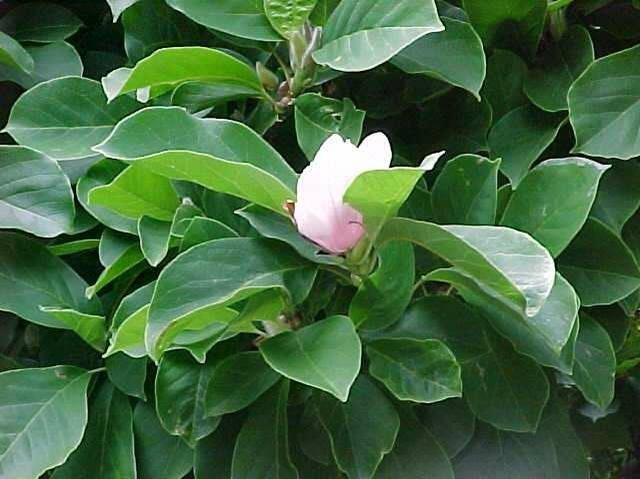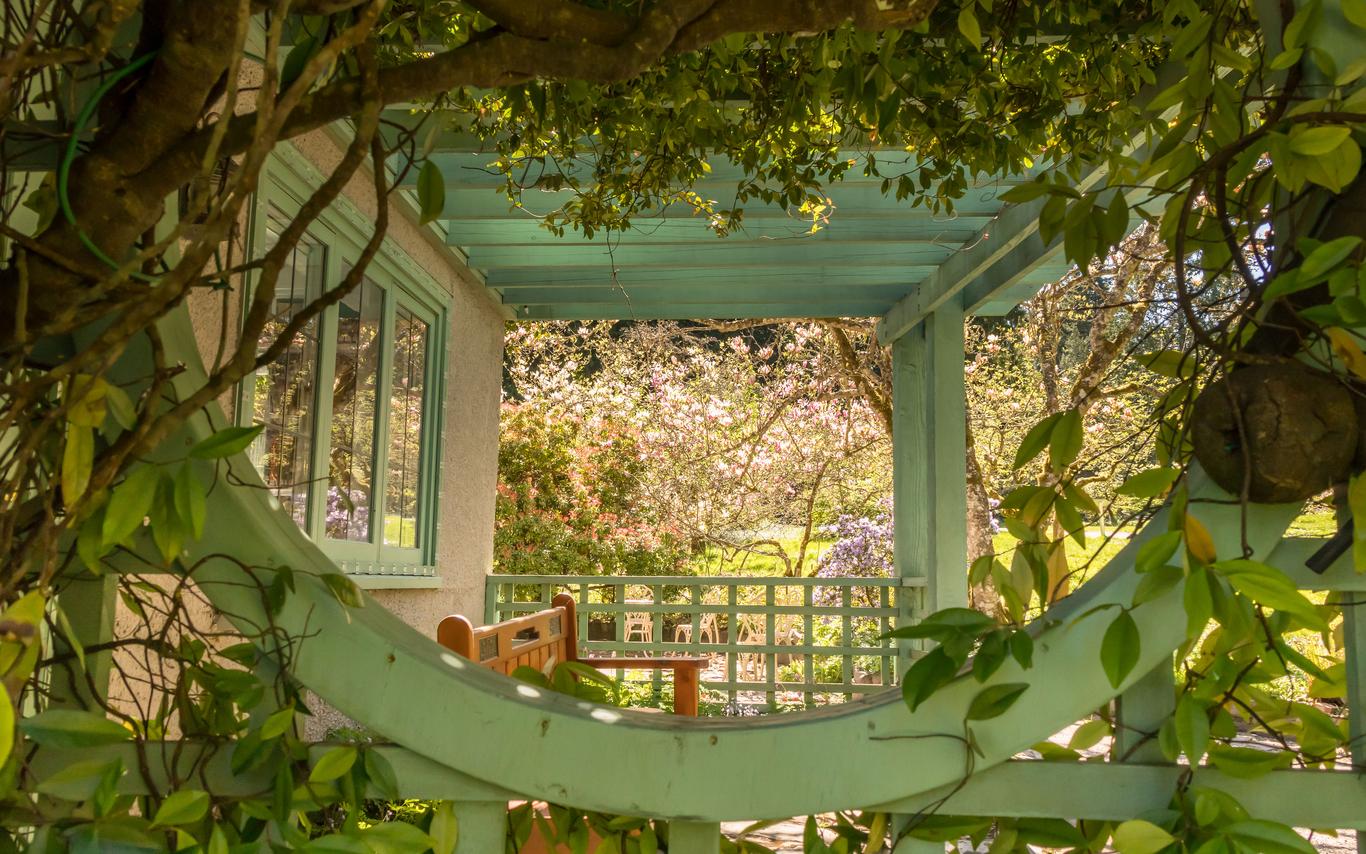Latin name: Magnolia x soulangeana
by Vancouver Island Master Gardeners Association
This tree is probably the most recognizable of all Magnolia’s. When this tree blooms it is a sure sign that spring is here. Most love the “furry” brown covering underneath the leaves called pubescence. The one threat to its beautiful 4-8” (10-20 cm) flowers is untimely frost. The show only lasts for a week or two, but is spectacular. Large, fuzzy green flower buds are carried through the winter at the tips of somewhat brittle branches. The flower bud is enclosed in a bract rather than in sepals, with its perianth parts undifferentiated and called tepals rather than distinct sepals and petals.
This tree is multi stemmed with a lovely mottled grey bark which can be corrected through pruning to favor one, dominant trunk; however such drastic pruning should be done while the tree is still young and only by an experienced arborist.
This tree loves moist, acidic and well drained soils and doesn’t do well when allowed to “dry out”

Written by: Jane Kerr
Photos courtesy of: Missouri Botanical Garden - Plant Finder
Attribute | Description |
|---|---|
Form: | When the tree is young it has an upright habit, as it matures it becomes more rounded. Growth begins to slow considerably when the tree reaches about 20 years of age. |
Foliage: | The 3-6” (7.6 to 15 cm) leaves grow in an alternate arrangement tapering to the base and sprouting from twigs with a coating of pubescence. The leaf margins are entire or undulate. Their blade shape is considered elliptic. |
Height/Width: | 20 – 30 feet (6-9 m) on a multi stemmed trunk with a spread of 25 feet (7.6 m) in a rounded, upright and erect shape. |
Hardiness Zone: | Zone 5-9 depending on the cultivar. |
Exposure: | Full sun to part shade. Best sited in a protected location as early springs frosts may damage buds. Avoid southern exposures close of buildings where buds may be induced to open too early in spring. |
Flower colour: | Large 4-8” (10-20 cm) solitary flowers varying in white to pink to an intense purple formed in a saucer or goblet shape. |
Leaf colour: | Dark green to an attractive brown colour in autumn. |
Flower time: | May/June |
Preferred soil and Watering: | Moist, acidic, organically rich, well drained loams. Not tolerant of poor drainage. Dislikes dry soil. |
Other: | Generally pest free. Scales of various types may infest twigs. Magnolia scale is quite common and can be ½“across. Generally controlled with horticultural oil applied in spring before the leaves break. May be subject to leaf spots caused by bacteria or a large number of fungi. Rake up and dispose of infected leaves. Keep trees healthy with regular organic fertilizer and watering. Does have some susceptibility to verticillium wilt. Pruning should be done sparingly with cancers on branches pruned out as well as all dead branches. Hard pruning results in sucker growth from the branches. |

